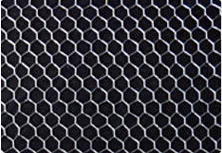Acoustic Noise Barriers Enhancing Urban Soundscapes
In today's rapidly urbanizing world, noise pollution has emerged as a significant environmental concern, particularly in densely populated areas
. The incessant clamor from traffic, construction sites, and industrial activities not only disrupts the tranquility of everyday life but can also pose serious health risks to individuals. To mitigate these impacts, acoustic noise barriers have been developed as an effective solution to absorb and reflect sound, providing a quieter, more pleasant living environment.Acoustic noise barriers are specially designed structures that reduce noise levels by blocking sound waves. They are typically employed along highways, railways, and near industrial sites, acting as a shield for nearby residential areas. Made from various materials such as concrete, wood, and specially designed acoustic panels, these barriers can significantly decrease noise pollution and improve quality of life.
One of the primary functions of acoustic barriers is to intercept sound waves generated by traffic or other sources of noise. Sound waves travel in straight lines, and when they encounter a barrier, some of the sound is reflected back, while some may be absorbed depending on the material's properties. The design and height of these barriers are critical in determining their effectiveness; taller barriers generally provide better sound reduction because they intercept sound waves at a higher elevation.
Research indicates that well-placed noise barriers can reduce noise levels by 5 to 15 decibels. This is a substantial decrease, as a reduction of just 10 decibels is perceived as halving the sound intensity by the human ear. Consequently, the need for adequate planning and design is essential in the construction of noise barriers, ensuring that they adequately serve their purpose.
acoustic noise barriers

Moreover, the placement of these barriers can significantly impact their efficacy. Factors such as the distance from the noise source, the topography of the area, and the orientation of the sound waves must all be considered. For example, a barrier may be more effective if it is situated close to the noise source rather than further away. Additionally, natural topography, such as hills and valleys, can also play a role in how sound travels, and these elements can be integrated into barrier design to optimize performance.
Aesthetic considerations have also become important in the design of acoustic barriers. Traditional barriers, particularly those made of concrete, can be unsightly and may detract from the natural beauty of the landscape. As a response, many urban planners and architects now advocate for designs that incorporate greenery and artistic elements. Vegetative noise barriers, for instance, use layers of plants to absorb sound while adding to the aesthetic appeal of the environment. This biophilic approach not only helps in sound mitigation but also enhances biodiversity and improves air quality.
In addition to the practical functionality of noise barriers, their installation can lead to increased property values. Homes located near busy roads or railways often experience reduced resale value due to noise disturbances. The presence of an effective noise barrier can create more appealing living conditions, thereby attracting buyers and potentially increasing property values in adjacent areas.
Despite their benefits, the construction and maintenance of acoustic noise barriers pose challenges. Costs can be significant, and ongoing maintenance may be required to ensure that barriers remain effective over time. Local governments and urban planners must weigh these costs against the long-term benefits of reduced noise pollution and improved community health.
In conclusion, acoustic noise barriers serve as a vital tool in the contemporary urban landscape, addressing the pervasive issue of noise pollution. By effectively absorbing and deflecting sound, they contribute to healthier, quieter environments. As cities continue to grow, investing in innovative and aesthetically pleasing noise barrier solutions will be essential for enhancing urban soundscapes, ensuring that the benefits of modern living do not come at the expense of peace and tranquility.
-
The Best Metal Mesh Solutions: Expanded Aluminum Metal vs. Expanded Stainless Steel Metal
NewsSep.10,2024
-
Round Perforated Sheets vs. Hexagonal Perforated Sheets vs. Embossed Perforated Sheet Metal
NewsSep.10,2024
-
Perforated Metal Sheets
NewsSep.10,2024
-
Experience The Excellence Of Stainless Steel Grating
NewsSep.10,2024
-
Discover the Versatility Of Metal Mesh Expanded Forming Machines
NewsSep.10,2024
-
Discover The Advantages Of Steel Grating For Sale
NewsSep.10,2024
Subscribe now!
Stay up to date with the latest on Fry Steeland industry news.

